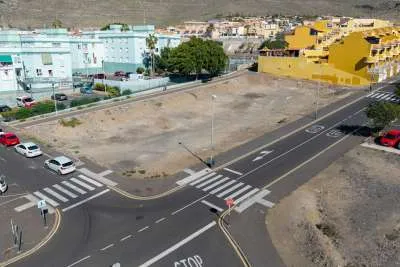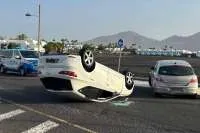DGT to scrap vehicle stickers: Major overhaul of environmental certification announced
- 18-06-2025
- National
- DGT - Trafico
- Photo Credit: Autobild
The Directorate General of Traffic (DGT) for Spain, including the Canary Islands, is preparing to overhaul its current system of environmental vehicle stickers.
This labelling system, which classifies vehicles based on their engine technology, has until now played a crucial role in regulating access to low-emission zones and promoting the adoption of greener vehicles.
Currently, vehicles are categorised into five labels: no label, B, C, ECO, and Zero Emissions. The system has prioritised electric and hybrid vehicles, granting them certain tax advantages and access privileges in restricted urban areas.
However, increasing scrutiny has exposed the limitations of this approach, with some vehicles labelled as "sustainable" still emitting significant pollutants under certain conditions.
New Law Demands a Comprehensive Review
Under pressure from political parties, the Spanish Government has introduced an amendment to the Sustainable Mobility Law, requiring a full revision of the DGT’s labelling criteria within twelve months. For the first time, actual carbon dioxide (CO2) emissions will explicitly factor into the assessment, moving the focus beyond just engine type.
The revised system aims to reflect more accurately the real environmental impact of vehicles, addressing known weaknesses in the current methodology. For example, many plug-in hybrids can rely heavily on their combustion engines if not regularly charged, yet still retain ECO labels. Similarly, some vehicles classified as Zero Emissions may release pollutants once their electric range is exhausted or if not operated efficiently.
Potential Impact on Buyers and the Second-Hand Market
Incorporating CO2 emissions into the assessment could significantly alter which vehicles qualify for benefits. Models that currently enjoy tax breaks or unrestricted access to low-emission zones under the ECO or Zero labels could lose these privileges if their real-world emissions are deemed too high. This shift may influence both new vehicle sales and the second-hand market, as well as consumer purchasing decisions going forward.
Responsibility for the review will fall to an interministerial working group, involving the Ministries of Transport and Sustainable Mobility, Interior, Ecological Transition, Industry and Tourism, Economy, and Trade. Spain’s regional governments will also be consulted to ensure the new system takes local low-emission zones into account.
Reform Could Affect Subsidies and Incentives
The reform may also reshape public subsidy programmes such as MOVES, which supports the purchase of electric and hybrid vehicles. Future incentives could be redirected towards vehicles with demonstrably lower real-world emissions, favouring manufacturers that invest in genuine efficiency and making it harder for companies to rely on so-called “greenwashing” tactics.
Among the options under consideration is the introduction of real-world driving tests or real-time monitoring systems, such as the WLTP (Worldwide Harmonised Light Vehicles Test Procedure) protocol. This would help to bridge the gap between laboratory-certified emissions and actual performance in everyday driving conditions, especially in urban environments or under higher energy demands.
Environmental organisations have largely welcomed the government’s plans, viewing them as a necessary step towards a more coherent climate policy. However, they are calling for clear communication and transitional measures to avoid penalising consumers who purchased vehicles based on the previous system.
Other articles that may interest you...
Trending
Most Read Articles
Featured Videos
A Vision of Elvis Tenerife Promo
- 10-05-2025
TEAs 2025 Highlights
- 17-11-2025



























































